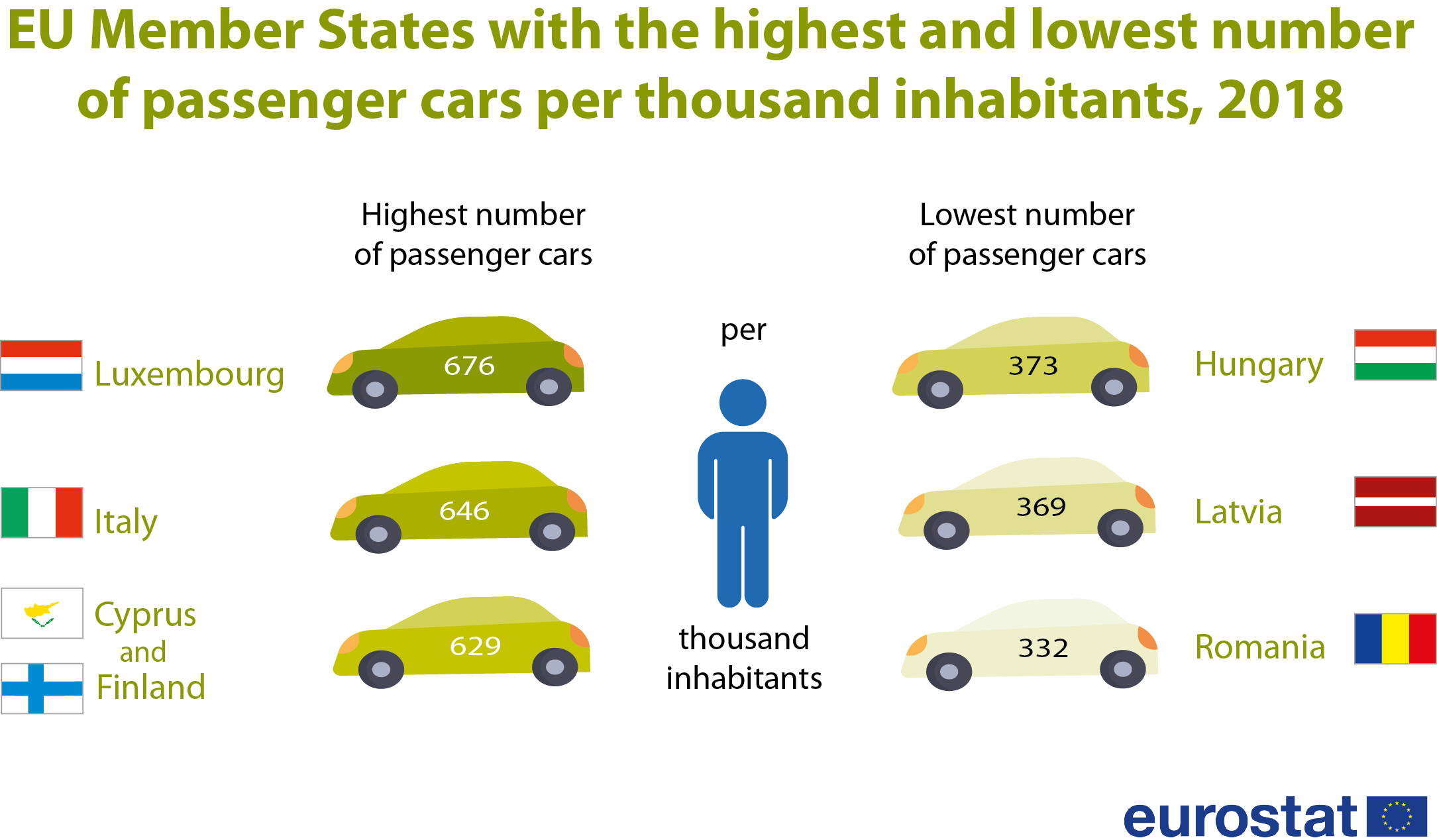Among EU Member States, Luxembourg recorded the highest ’motorisation rate’ with 676 passenger cars per 1 000 inhabitants in 2018. However, cross-border workers using company cars registered in the country may influence this figure. Luxembourg was followed by Italy (646 cars), Cyprus and Finland (both 629 cars).
In contrast, the lowest rates were recorded in Romania (332 cars), Latvia (369 cars) and Hungary (373 cars).
Source dataset: road_eqs_carhab
In 2018, the highest number of registered passenger cars was recorded in Germany with 47 million cars. Thereafter followed Italy (39 million cars) and France (32 million cars).
Over the five-year period from 2014 to 2018, there was strong growth in the number of registered passenger cars in several EU Member States. The highest growth was recorded in Romania (31%), followed by Czechia, Slovakia and Lithuania (each 19%), Hungary and Portugal (both 17%) and Cyprus (15%).
Highest share of passenger cars over 20 years old in Poland
Several EU Member States reported a large share of ’old’ passenger cars (20 years or older) in 2018. The Member States with the highest shares were Poland (36.5%), Estonia (29.6%), Finland (25.2%), Romania (21.4%) and Malta (20.8%).
By contrast, the shares of the ’youngest’ passenger cars (less than 2 years old) were highest in Ireland (29.2%), Luxembourg (23.8%), Denmark (23.3%) and Belgium (23.1%).
Source dataset: road_eqs_carage
For more information, see the Statistics Explained article on passenger cars in the EU.
Note:
- In recent years, a number of countries had programmes in place supporting the purchase of new cars with low emissions while scrapping the owners’ old car. The general aim of these programmes was the renewal of the passenger car fleet with lower emission cars, while simultaneously stimulating the economy. These programmes have had a certain influence on the age composition of passenger cars in individual countries. Such programmes were set up in almost half of the Member States; in this context, one should take note of the reference year when analysing these data.
- The European Union (EU) includes 27 EU Member States. The United Kingdom left the European Union on 31 January 2020. Further information is published here.
To contact us, please visit our User Support page.
For press queries, please contact our Media Support.



